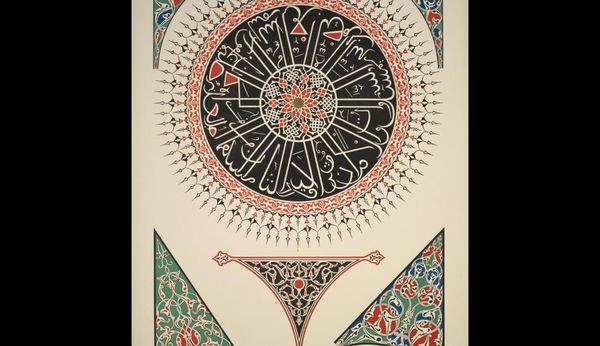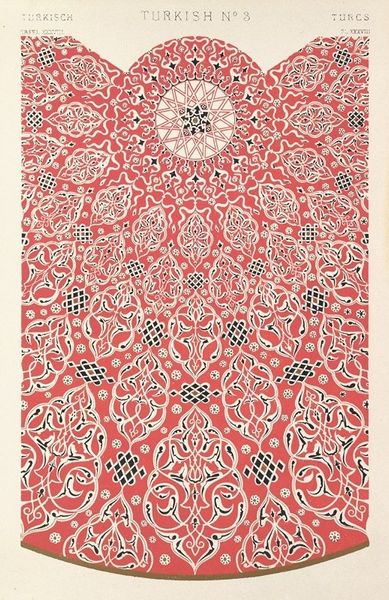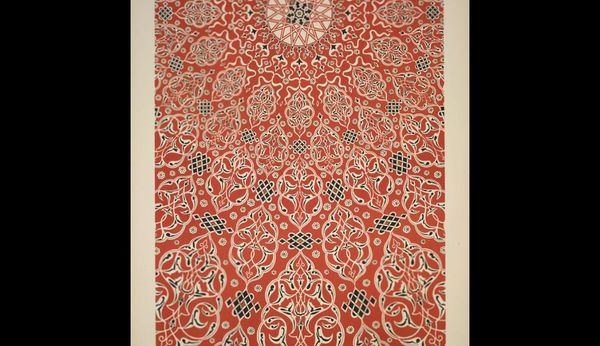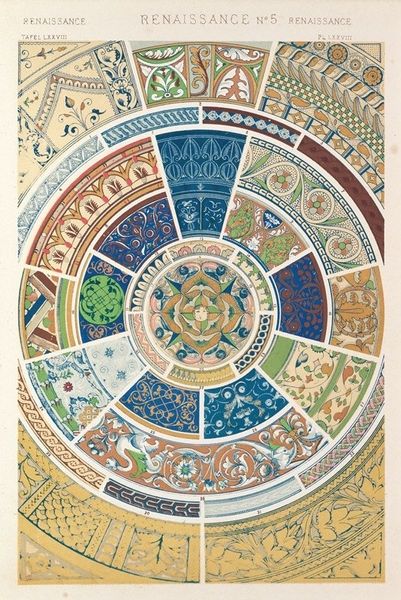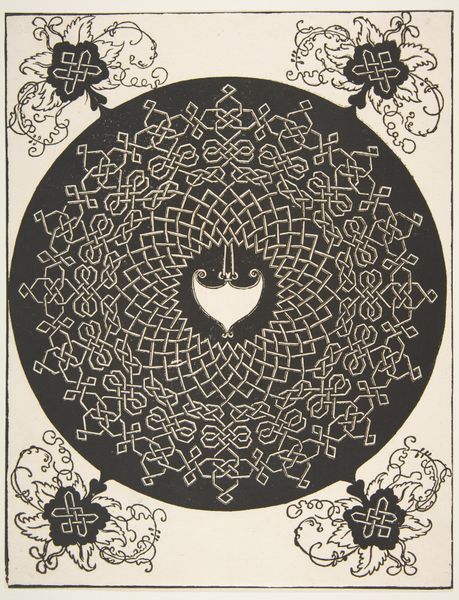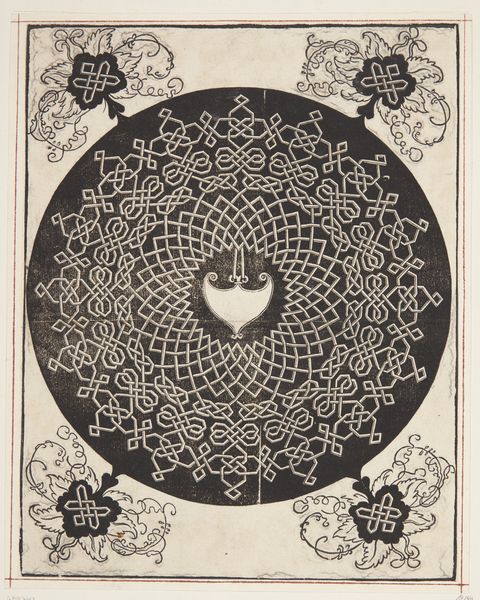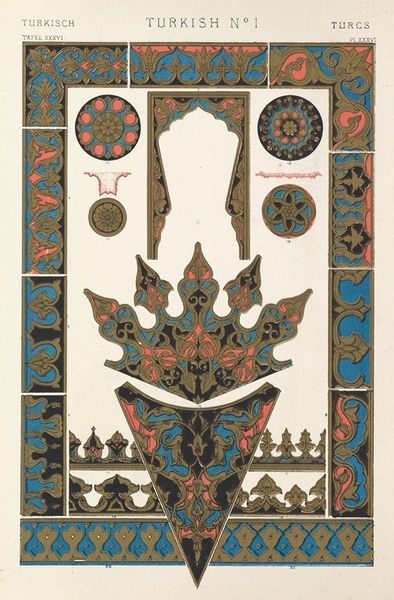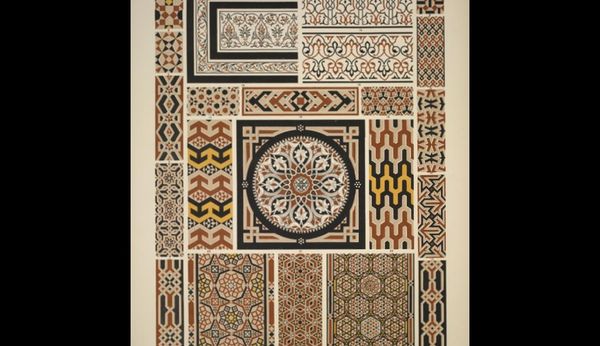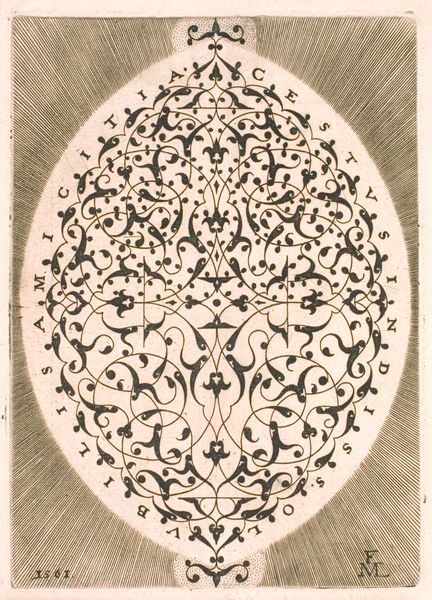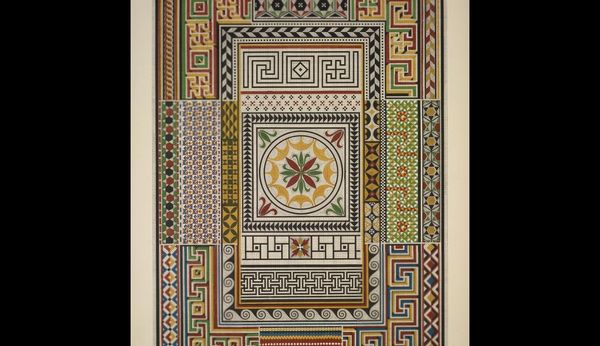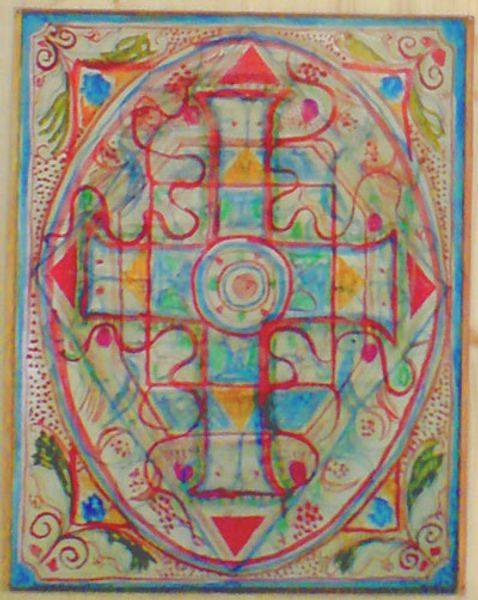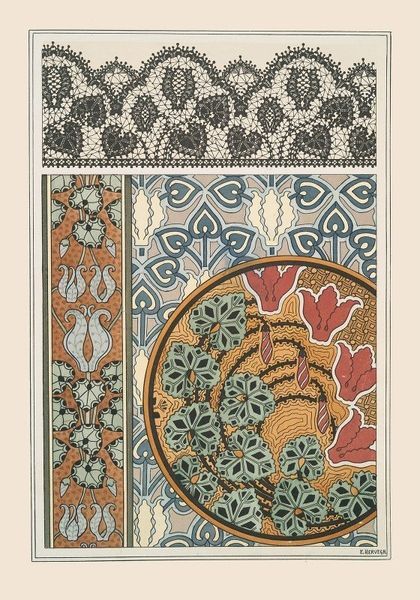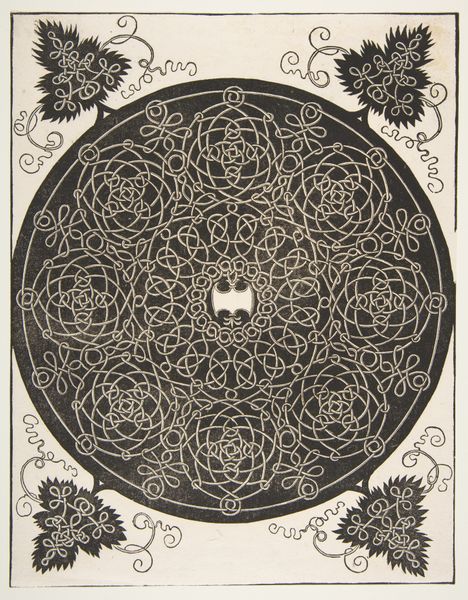
drawing
#
drawing
#
geometric
#
flower pattern
#
orientalism
#
pattern repetition
#
islamic-art
#
decorative-art
Copyright: Public Domain: Artvee
This is Owen Jones's "Turkish No. 2", a chromolithograph showcasing Islamic design principles. At its heart lies a circular motif, adorned with Arabic calligraphy. This script isn't merely decorative; it conveys sacred meaning, often verses from the Quran, meant to evoke a spiritual response. The arrangement of the calligraphy in a circular format reminds us of mandalas, which appear across various cultures, from Buddhism to indigenous traditions. The circle, a symbol of wholeness and eternity, speaks to a universal yearning for unity and completion, echoing Carl Jung’s archetypes of the collective unconscious. Notice also the geometric patterns, a hallmark of Islamic art. Geometry, with its precise repetition and symmetry, reflects the divine order and harmony of the universe. This use of geometry isn’t confined to Islamic art; similar patterns appear in Roman mosaics and medieval Christian art, revealing how humans across different epochs strive to capture the infinite through visual means. The emotional power lies in the design's ability to create a sense of peace and contemplation, engaging viewers on a deeply subconscious level. These visual symbols resurface and evolve, reminding us of the cyclical nature of cultural memory and the enduring human quest for meaning.
Comments
No comments
Be the first to comment and join the conversation on the ultimate creative platform.
